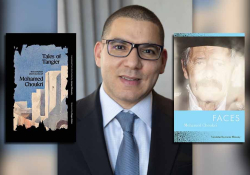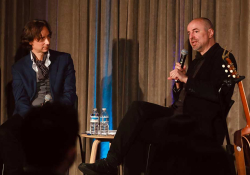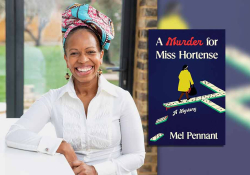Religion and Redemption in the Plays of August Wilson: A Conversation with Riley Keene Temple
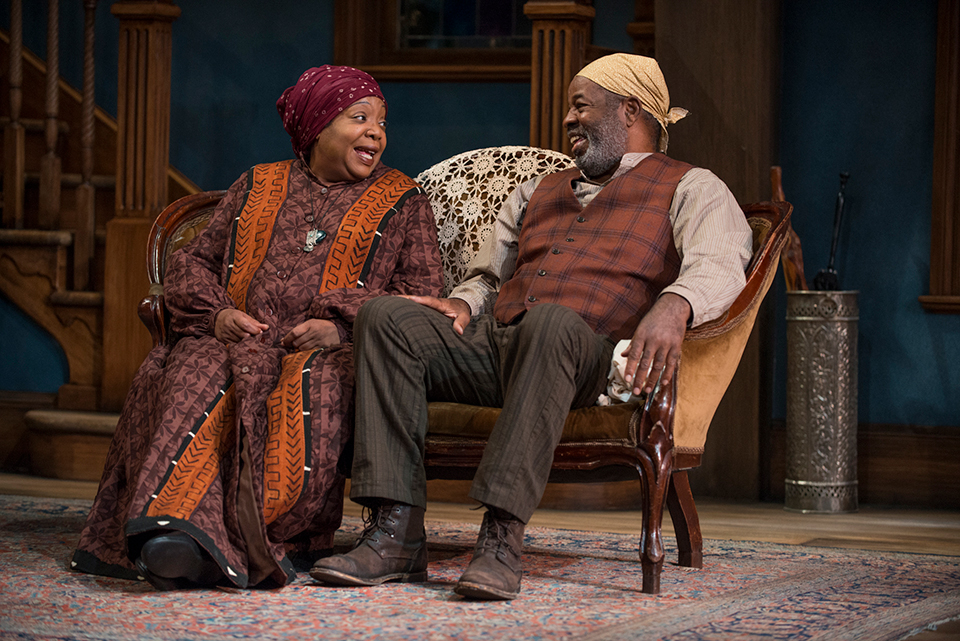
Riley Keene Temple discusses his new book, Aunt Ester’s Children Redeemed (2017), exploring themes of freedom and redemption through August Wilson’s Pittsburgh Cycle, also known as the Century Cycle, and gives insight on the culture and community of the African American struggle.
Hannah Grillot: Would you talk a little about August Wilson and his ten-play cycle?
Riley Keene Temple: August Wilson began by writing about people from his neighborhood. His first play was written, I think, in 1977, and it was a version of Jitney. He kind of put it down [on the page], and then in the early 1980s he wrote a play called Ma Rainey’s Black Bottom. This play took place, unlike any other play in the ten-play cycle that he wrote, in Chicago. The play was about a blues singer named Gertrude Ma Rainey, who was a real character. He submitted the play to the Eugene O’Neill Playwright’s Conference at the Yale School of Drama. That was led by Lloyd Richards, who was the original director of Lorraine Hansbury’s A Raisin in the Sun, and dean of the Yale School of Drama. Ma Rainey was rejected twice. The third time, it was accepted.
New York Times theater critic Frank Rich was there to see some of the new work, and theater critics could only come if they promised to not write reviews of any plays that they saw there. These are all plays that were still in development and still needed work. Frank Rich was so excited he almost broke the rules to write about August Wilson.
Wilson’s Ma Rainey’s Black Bottom was undertaken by the Yale School of Drama under the direction of Lloyd Richards. It found its way to Broadway, and Broadway was very excited about this new voice. It was an astonishing play; for its musicality, for its raw power, and its exposure of a part of black life, “backstage” or the “back of the house,” as I like to refer to it sometimes, of the lives of jazz musicians. But it was full of metaphor, and people asked the question: how could a God of the enslaver be the same God as the enslaved? Or put in another way, how could the enslaved worship the same God as the enslaver?
What happens in the play is that there is a young brass trumpeter who curses God. So much so that, whenever you see the play, there are old black women in their Sunday best who are probably religiously devout and are listening to this young man tell God to “kiss his motherfucking ass.” Then, you know, there’s “Oh, no, baby, don’t do that . . .” This put August Wilson on the map. His next play was Fences, which won him the Pulitzer Prize. Then he wrote Joe Turner’s Come and Gone, followed by The Piano Lesson, and he realized that he had written each play in a different decade of the twentieth century—Ma Rainey in the 1920s, Fences in the 1950s, Joe Turner’s Come and Gone in the 1910s, and The Piano Lesson in the 1930s—and he thought at that point he would just carry on.
All his plays are about aspects of black life. They are not dealing specifically with the African American struggle against white oppression, although that’s clearly in the background. It is about people who have come from the South to the North seeking freedom. It is essentially the Exodus story. He describes people coming to the North with their hearts kicking in their chests, their pockets lined with dust, with a guitar in one hand and a Bible in another. So there you have it. They bring with them the blues, the songs, the culture to the North. He said that the blues informed all his work, and he’s right. Most of his great speeches in these plays are pretty much blues lyrics. And the blues infects his work in every single way.
So, that’s essentially what the Century Cycle is all about. It’s about a people coming from the rural South to the industrial North seeking freedom . . . redemption, I call it.
Grillot: How did you, a communications lawyer turned theologian, become interested in exploring themes of redemption in Wilson’s Century Cycle?
Temple: Well, I have been a devotee of theater for many, many years. I chaired the board of Washington’s Arena Stage, which is a professional theater company [in DC], and I learned a lot about theater there. I came to love theater. When I left Arena some time ago, I started with Kenny Leon at another theater company, the True Colors Theatre Company, which was a national black theater company in Atlanta. It was the first theater company in a very long time of national prominence with African Americans of high artistic merit. That’s what we set out to do. The first play we did was Fences. August Wilson was there. And I knew from the beginning, after meeting Wilson and sitting beside him one time during a performance, that this was a man whose work I needed to become familiar with.
I did all that as an avocation; I loved the theater and loved poking around in the arts, which were an avocation for me. Then at some point I realized that I probably wanted to study theology and learn a little bit more. Not to become ordained but to learn more about what motivates people, all our lives, to address a relationship with God. I went to an Episcopal seminary, and I took a course on systematic theology, which is the big course in seminary—it teaches us how all the major theological doctrines hang together. The professor said, “You’re going to write your first paper and you can talk about theological reflection in anything you have read, you may want to do it with a piece of music, you may want to do it with a piece of art, or sculpture, or drama, or whatever . . . a novel, nonfiction . . . feel free to explore theological reflection in all of that.” I said, “Oh, my goodness” [laughs], and I wrote about a number of plays, the first being A Streetcar Named Desire.
But as I began to think about Wilson’s plays, I realized that in each one the characters were on a journey. They are on a journey to find identity. Look back, Wilson says; you cannot know who you are unless you know where you came from. And because of slavery most African Americans had their identity erased, shredded. And so our journey in the twentieth century, he thought, was to reclaim those bits of identity and to stitch them back together again. In other words, to be redeemed. And I began to see that. This was the topic for my capstone project, which was my honors thesis, and that’s how I got involved with finding theological reflections in August’s plays.
I consulted with August Wilson’s dramaturg Todd Kriedler, who had worked with him on his last three plays. I said, “Todd, I think I want to write about August Wilson’s theology.” He said, “I don’t think that’s there, Riley, oh no no,” and I said, “Well, hold on, let’s talk.” And as I talked, he said, “I think you’re on to something.” No one had ever written about this aspect of August’s work before. That was clear because I couldn’t find any research on it, and it pleased me very much because I was exploring new territory.
Grillot: Why August Wilson plays instead of other African American playwrights?
Temple: Well, first of all, he speaks to me. I love his writing and I love his characters. Of course there are other African American playwrights, all of whom deal, in some way, with our path to freedom. But August specifically asks questions about our relationship with God. In almost every play there is a question about a god. There is some struggle with a theos or a life-and-death struggle. I think that’s what appealed to me more than any others. It’s not that I don’t like them, but I had loved his plays more than anybody else’s at the time.
Grillot: Who is Aunt Ester, and what does she represent for the African American community?
Temple: Aunt Ester came to August Wilson as he was writing Two Trains Running, the play that takes place in the 1960s . . . 1968, to be precise. She doesn’t appear, but one of the characters, Holloway, tells the others, you need to go to Aunt Ester’s for wisdom. Just go knock on the red door—someone will let you in. Aunt Ester is as old as the number of years blacks have been on American soil. She came in 1619—when the first blacks arrived, she arrived as well. And, by the end of the cycle she’s 366 years old. She’s an embodied character. She embodies our history, our culture, our joys, our sorrows, our triumphs, our major losses. The tragedies, the victories, the singing—everything we are, she embodies. She is our ancestral past.
The tragedies, the victories, the singing—everything we are, Aunt Ester embodies. She is our ancestral past.
And so, when people are adrift, the characters say to one another, “Go to Aunt Ester. She will take care of you.” But she takes care of them in a strange way. She says, “Don’t give me the money, throw the money into the river and it will come back to me.” So people go to Aunt Ester and she helps them get their souls washed, get rid of guilt, get rid of the weight of the past so that they can move ahead, run toward a finish line of redemption.
An example of this is that one of the characters in the last play, Sterling, who appears in Two Trains, says, “I went to see Aunt Ester and I went to her because I was troubled because I had these resentments, because I was an orphan.” She says, “Now set that down. Don’t carry around those rocks of resentment because those rocks are going to get heavy. If you want to pick up something, pick up a bag of tools and then you’ll have something.” He said, “I did, I picked up a bag of plumbing tools. I’ve been a plumber ever since and I’ve been perfectly happy” [laughs].
In the first play of the cycle, Gem of the Ocean, which he wrote toward the end of the entire cycle, Aunt Ester appears. This is the only play where she appears actually as a character, and then she is almost 300 years old. Someone had killed himself because he was falsely accused of the crime that this man, Citizen Barlow, had committed, and he had come to get his soul washed. She says to him, “I can’t wash your soul but I can show you where to go to get it washed.” She shows him how to get there on a journey.
She is a leader of sorts. Aunt Ester is spelled A-U-N-T E-S-T-E-R not E-S-T-H-E-R. Aunt Ester, Aunt Ester, Ancestor. She is the embodied character. She appeared in Gem of the Ocean, she is referred to in the 1960s play Two Trains Running, she is referred to in Radio Golf, and also King Hedley II, the one before. King Hedley II is set in the 1980s when black people are killing each other in the streets, and they’re forgetting the value of their past. The path to her house is all grown over with weeds because people have stopped seeking her wisdom, and the ties to the past are adrift. She dies with her hands up to her head. So that is who Aunt Ester is.
Grillot: Aunt Ester gives the advice to her children that in order to be redeemed, “to have their soul washed,” they must “go back and pick up the ball” because when you reach the end zone without a ball, there won’t be a touchdown. The ball, of course, symbolizes the memory and acceptance of the African American struggle and history in this country . . .
Temple: Yes, but it also symbolizes the move forward. So, in your desire to move forward, whatever that means, to build upon the past because you’re covering the yardage, to be strengthened by the past you need to pick up that ball and run with it. But sometimes you’re going to make mistakes. We will make mistakes, we will have setbacks, we will drop that ball. But we have to go back and pick it up. We cannot be pummeled, destroyed by our mistakes. You have to be ennobled by them. So that’s why you go back and pick up that ball and run with it.
We cannot be pummeled, destroyed by our mistakes. You have to be ennobled by them.
Grillot: How do you think this advice has manifested itself throughout the years and has evolved through generations of black Americans that still face prejudice and injustice in this country?
Temple: Have you been to the African American History Museum [in Washington, DC]?
Grillot: Unfortunately, no, I have not.
Temple: Well, when you go in and start at the bottom, it’s very dense and very dark because it’s all about slavery and what happened during slavery. When you go up to the top, there is a diorama that celebrates black achievements. Not in voice but in written words and in visual celebrations of song, dance, poetry, cooking, and scholarship—every single endeavor. And to me, that’s exactly right; you go from the darkness up to the light. It’s a celebration of the survival and the lifting up of the human spirit.
The resilience of African Americans is as astounding as anything I think people have ever seen. I grew up in a totally segregated America. I did not know any white people growing up; I did not go to school with white people. It was all segregated. We had black doctors, black lawyers, black newspapers, we had a black symphony, black ballet, everything. Despite Jim Crow, we thrived. The segregation laws came after Reconstruction because whites in the South wanted to act as much as possible as if slavery hadn’t ended, to continue as much of the oppression of slavery that they could get away with. They did and it lasted a century.
The resilience of African Americans is as astounding as anything I think people have ever seen.
But we are here. We are still thriving. Yes, we have problems, and yes, some of it we have brought on ourselves, but most of it is a result of the life of oppression we have been forced to live that most white people know nothing about. Because they don’t see it as important. The spirit of Aunt Ester lives because we make it. We put one foot in front of the other day by day, by the grace of whoever it is we believe in: the grace of God, the grace of the gods of Africa, the grace of the God of Christianity.
Grillot: You’ve discussed the inherent conflict that the characters within the Century Cycle face by accepting Christianity and choosing to love and worship the same God as their previous enslavers. Has this concept affected your life as a theologian and seminary graduate and the ways you have analyzed the themes and concepts throughout the cycle?
Temple: Well, humankind seems to have always struggled with a desire to know who we are and why are we here. I read a lecture by a former astronaut, William Anders, who actually stepped on the surface of the moon. He talked about standing there in the three-dimensional black space. He said it’s not a void, but three-dimensional. He said, “I’m there on Mother Nature’s front porch, and I could block out the Earth with my fist.”
Everything that humankind has ever known was on that globe. It was not hurtling through space; it was there, suspended. And it was turning. And he said, “It came to me that we are all the same. Our desire is all the same. That is, to have a place to live and to be able to get along. This is the root,” he says, “of all religion. Love your home and get along. I don’t care what religion it is, that is the source of it and that is what we need to do.” And, of course, in Christianity and Judaism it is “love thy God with all thy heart, with all thy soul, with all thy mind,” and the second, “love thy neighbor as thyself, love one another, and love God.”
So along come Africans who have been sold, snatched up, and treated as property, and because it is illegal to teach them to read, slave owners read them passages from the Bible—much of which is seemingly a justification for slavery. But the human spirit is strong enough, resilient enough, that the idea of being free was always there.
Someone said that the civil rights movement began in the 1960s, and I say no—the civil rights movement began when the shackles began to chafe at ankles and wrists, and people wanted to be free. That’s when it began. So, when the slaves heard the story of Moses and Pharaoh and the Israelites, they heard a story of liberation; that God wants God’s people to be free. That’s why you find so much resonance in the black community with the stories, the narratives of the Old Testament because they’re all stories about God’s relationship with His people, and how God wants God’s people to be free. That informs everything. And then Jesus comes along. Jesus is a latter-day Moses, freeing the people from sin. All of that resonated.
Someone said that the civil rights movement began in the 1960s, and I say no—the civil rights movement began when the shackles began to chafe at ankles and wrists, and people wanted to be free.
Now, there was Christianity on the continent [of Africa] before the slave trade began, and the transition to US Christianity or European Christianity was not too far of a stretch because many tribal traditions had a great God and then lesser gods to which people prayed because they were not capable of reaching the larger God. So, Roman Catholicism was a very easy transition, particularly in the Caribbean and South America with the use of saints as intercessors between humankind and God. That was not a difficult transition. The difficulty came when the slaveholders used the Bible to keep people down. It did not work, because the human spirit and the desire to be free will always overcome it.
Now, there are people in August Wilson’s plays who approach it differently and say: I don’t believe it in that way. That’s not the way I see it. Harold Loomis in Joe Turner’s Come and Gone stands there and says, “your mister Jesus standing there while I’m wallowing around drowning, but when I see bones rise up from the sea, they come up with woolly hair and they will show me the way.”
We have always taken, as every human being does, our own experiences and melded them into our own rich amalgam of religion. Thus, you will see great movement in black expressions of faith. You will see very African types of worship in traditional Christian denominations in black America because we take what we have and we layer upon it and infuse it with our own culture. That’s what Aunt Ester does. She talks about Jesus regularly, but she also talks about the gods and about spirits inhabiting inanimate objects.
Grillot: You’ve mentioned that the major theological themes present throughout these ten plays may have been largely unintended by the playwright. Is this an indication that spirituality and religion are deeply ingrained in the African American experience?
Temple: Absolutely. I think that although Wilson never really talked about his desire to express spirituality and religion, he clearly addresses it. He addresses it in terms of the tension in Christianity—the God of the enslaved and the God of the enslaver. He talks about Jews celebrating the Passover and that black Americans should celebrate the day of the Emancipation Proclamation the same way the Jews celebrate the Passover. There are all these theological threads going through. Now, let’s go back and talk about the blues for a second. Let me quote you a couple of lines from Seven Guitars. Louise says to Vera:
[Henry] walked out on me and that was the best thing that happened to me. . . . He got to the doorway and I told him, “Leave your pistol. Don’t leave me here by myself.” He ain’t said nothing. He took out his pistol and handed it to me. I told him say, “I ought to shoot you.” We laughed and then he kissed me goodbye. I ain’t seen him since. I got that pistol upstairs now. What I’m trying to tell you is, don’t let no man use you up and then talk about he gotta go. Shoot him first. (act 1, scene 4)
That’s a blues lyric. I woke up, my man was leaving me, but I’m not going to let it happen again because I’m going to shoot him first. It begins in pain but it affirms life. In another line, Canewell says to Vera,
Some women make their bed up so high don’t nobody know how to get to it. I know you ain’t like that. You know how to make your bed up high and turn your lamp down low. (act 2, scene 7)
Those are blues lyrics, you know. Now, what is the connection between blues and spirituality? The Negro Spirituals. There is a lot of scholarship on the relationship between the blues, which is a uniquely black art form, and the Negro Spirituals, which are also a black art form. They both begin in pain but both wind up affirming life in some way. The only difference is that the blues are secular and the spirituals are sacred. That’s the only difference. But they still begin within the soul, in the deepest part of the soul, in our hearts. And that is an indication that this work is infused with spirituality. You can’t escape it.
Grillot: You often bring attention to the numerous ways that August Wilson includes the blues in his writing—in cadence, sentiment, and rhythm. However, as we near the end of the cycle, in King Hedley II, the characters have lost their song; they do not remember the past; they have stopped singing the blues. This is the play where Aunt Ester dies, at 366 years of age, from the grief of her children forgetting their history and assimilating to their white communities. In what way is the blues connected to the African American community, and what role does music play in the fight to “go back and pick up the ball”?
Temple: Let’s look at King Hedley II for a second. All seems to be lost. Stool Pigeon says, Aunt Ester’s dead but Aunt Ester’s coming back. She’s coming back. What we are hearing is an allusion to a Good Friday. And then we ask, how is Aunt Ester coming back? What happens at the end of King Hedley II? When all is lost, all is devastation, all is death. This mother who kills her own son, for heaven’s sake. The son dies, he bleeds, and Stool Pigeon says, he’s gone up to the mountain. He’s the best we have. He’s gone up—he’s the fatted calf. That alludes to the urban custom and belief for the sacrifice of one for the salvation of many. Now that predates Christianity by millennia—the sacrifice of one for the salvation of many.
At the beginning of the play Hedley says, “Do you see a halo on my head?” That is Wilson’s signal that this man has been called to be sacrificed. And, on some level, he knows it. So when that blood is sacrificed and he bleeds on the grave of the cat of Aunt Ester, the last thing you hear in the play is meow. Aunt Ester has been redeemed; Aunt Ester is resurrected. Her spirit is resurrected to continue to inspire. And somebody had to be sacrificed in order for that to happen. That’s why Hedley is king.
Then what happens in Radio Golf? You see people middle-class blacks aspiring to positions of power, from positions of power. And only after they go back . . . to pick up a ball . . . does that cadence return in their language. They had become assimilated, and only when they realized where they are and how rich the past is do they begin to speak with that cadence.
Grillot: It seems to me that perhaps the entirety of the Century Cycle is a journey in itself for the reader, for their redemption. That although we will fail at times—and there will be error—the human spirit will persevere . . .
Temple: Yes, August Wilson’s people make mistakes. And they are big mistakes. Levee kills someone; Troy Maxson cheats on his wife, alienates his son; King Hedley and his cohorts have committed great crimes over the course of their lifetimes. Hedley shot a man because he called him champ or something like that, and Hedley kills him. Elmore kills a man. Hedley and Elmore then discuss what it is like to kill another human being. “What have you done?” And they think that they have taken themselves out of the grace of God. Hedley says, “Mama Louise said to me as she was dying that she was leaving me in the hands of God. I didn’t have the heart to tell her that I done already messed that up. You take somebody’s life, you trying to be God and God don’t like that. God don’t like you acting like him. God decides when somebody is born, God decides when somebody dies, God don’t like you doing it. I screwed that up already.”
So you see there is resurrection everywhere. The ability to survive, to thrive, despite everything.
So they think they have taken themselves out of the ambit of God’s love. Christianity teaches there is no such thing. You can do nothing to take yourself out of the ambit of God’s love. It is a profound moment in that play. A lot of people miss that speech—those speeches and that dialogue. It’s rich and wonderful; and so you see there is resurrection everywhere. The ability to survive, to thrive, despite everything.
Solly Two Kings goes and burns down the mill in Gem of the Ocean because the man that owns the mill has been oppressing the people. And Solly dies while doing it. But Citizen Barlow takes up Solly Two Kings’s stick, his staff, dons his mantle, his coat and his hat, and goes back to continue freeing people in the South. The human spirit lives. And that spirit is a spirit to be free.
August 2017
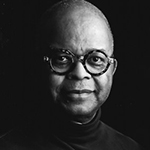 Riley Keene Temple became interested in exploring theological themes in August Wilson’s Century Cycle while working toward a master’s degree in theological studies from the Virginia Theological School. Currently a telecommunications lawyer in DC, he is an active board member and supporter of many arts organizations, including the National Archives Foundation and the Trust for the National Endowment for the Humanities.
Riley Keene Temple became interested in exploring theological themes in August Wilson’s Century Cycle while working toward a master’s degree in theological studies from the Virginia Theological School. Currently a telecommunications lawyer in DC, he is an active board member and supporter of many arts organizations, including the National Archives Foundation and the Trust for the National Endowment for the Humanities.

Hannah Grillot is an undergraduate student at the University of Oklahoma pursuing degrees in dramaturgy, international development, and religious studies. During the school year, she is an intern for World Literature Today.
Editorial note: Lines from Seven Guitars (E. P. Dutton, 1996), copyright © 1995 by August Wilson. Reprinted in Black Drama: African, African American, and Diaspora 1850 to Present, ed. James V. Hatch (Alexander Street Press, 2008).
